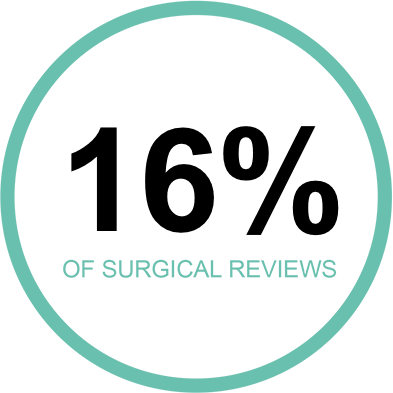The development and introduction of new techniques and technologies
New techniques and technologies are crucial to advancing surgical care and improving patient outcomes. To be introduced safely they must be underpinned by rigorous clinical governance processes, supported by appropriate training, and come under tight scrutiny of patient outcomes.
Changes to established practice need to be properly managed. Those involved should consider the relative risks and benefits of the proposed new approach. They should discuss in an open and transparent manner he options for surgery or alternative treatments with the patients who will have the new procedure. Patients should be provided with clear data that shows the relative risk of the proposed approach, as opposed to the more established alternatives available.
Significant and serious problems can occur where new techniques and technologies are introduced without appropriate clinical governance arrangements and where senior clinical leaders do not maintain effective oversight of these processes. These difficulties can be highly challenging to resolve, and can affect the quality and safety of clinical care.
Our experience shows the introduction of minimally invasive operative techniques as well as the introduction of new and experimental treatment therapies can cause significant problems.
The following are areas that need constant oversight:
- The processes by which an individual trains in the new approach.
- The oversight and quality assurance of the training in the new technique or therapy.
- The individual approach to introducing the new technique or therapy.
- The learning curve they experience while undertaking the new procedure.
- How patients are identified as being able to benefit from the new approach.
- How the potential risks and the potential benefits of the procedure against more established alternatives are explained.
- Postoperative management of patients.
- Reporting and auditing the outcomes of the new approach
Problems can arise if any of these concerns are not appropriately managed by the individual surgeon introducing the new technique, technology or therapy. This can occur within both NHS and private practice, and it is critical that the organisation has proper oversight of any new practices being pursued.
When introducing new techniques, surgeons must ensure that these techniques are only adopted after they have had an appropriate period of training and mentorship. They should also ensure that their adoption is underpinned by appropriate clinical governance mechanisms, and effective multidisciplinary team-working arrangements. The new approach should also be subject to a rigorous outcomes audit.
Without following such processes, problems can occur, and patient care can be seriously compromised.
Resources:
- Royal College of Surgeons | Surgeons | GSP 1.2.4 Introduction of new techniques
- Royal College of Surgeons | From innovation to adoption
- Australian Safety and Efficacy Register of New Interventional Procedures-Surgical (ASERNIPs) | A review of policies and processes for the introduction of new interventional procedures

